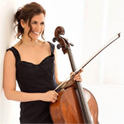
17 (not so) Random Tips for Practicing the Bach Cello Suites
Inbal Segev
1. First play the bass line. Then add the top voice.
2. Think about voicing.
3. Sequences.
4. Find circles of fifths and enjoy them!
5. Gestures on slurs—the Baroque bow is heavier at the frog and lighter at the tip and sometimes it’s beautiful to show the tapering of sound towards the tip.
6. Show where codas happen.
7. Interrupted cadence?
8. Sigh figures.
9. Be aware of the underlying harmony.
10. Echo effects (not too much!).
11. Vary bow pressure—Baroque bow is heavier on the down bow, lighter on the up bow. This can shape a passage of descending eight notes for example. They are not all equal in length and strength.
12. Gigue—breathe more. Feel like you are about to skip before the start.
13. When playing triplets—when two notes are slurred, the third note is still part of the group.
14. Gigue or Giga? French, Italian or a mix of both? Italian Gigue is brilliant, bright and simpler harmonically than the French, which has dotted rhythms and is contrapuntal.
15. Play with figuration. In other words, notice repetitive patterns and show that they repeat; change their expression as you repeat them.
16. Different registers have different colors.
17. Gut strings take a while to speak, especially thick C strings. Even if you play on modern strings — give them time. Also, when playing large intervals, take some extra time.
Subjects: Baroque, Repertoire
